CMDC has worked in collaboration with Nigel Shrive from the University of Calgary.
Supporting Innovation through Research Partnerships
Nigel Shrive
Work has been conducted on the following projects:
Eco-Friendly Ductile Cementitious Composites (EDCC)
Project Summary:
A large proportion of the existing building stock in Canada is composed of loadbearing Un-Reinforced Masonry (URM). In seismic zones, this type of construction can pose a safety risk for the occupants as it may not meet the structural resistance and / or ductility requirements of contemporary building codes.
An innovative Eco-Friendly Ductile Cementitious Composite (EDCC) is currently under investigation for possible use as a reinforcing material for retrofitting existing URM structures.
The retrofitting process involves applying a layer of EDCC to the surface of URM walls to improve their resistance and ductility.
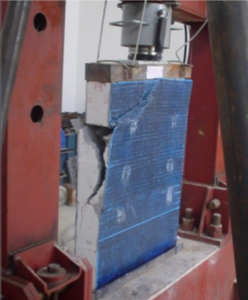
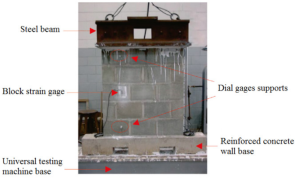
Recent NAMC Articles:
Parsekian G. and Shrive N. (2019, June). “Preliminary Results on Surface Coating Strengthening Concrete Block Masonry with Eco-Friendly Ductile Cementitious Composite.” In P.B. Dillon & F.S. Fonseca (Eds.), Proceedings of the Thirteenth North American Masonry Conference. Paper presented at the 13th North American Masonry Conference, Salt Lake City, Utah (pp. 696–706). Longmont, CO: The Masonry Society.
Select Journal Articles:
Veronese, R.B.A., Madeiros, W.A., Parsekian, G.A., and Shrive, N.G. ”Numerical Analysis of Eco-friendly Ductile Cementitious Composite Influence on Structural Masonry Reinforcement.” Engineering Structures, 252, 113686, 2022.
Select Theses and HQP:
Pedram Kaheh: https://prism.ucalgary.ca/handle/1880/106391
Analysis of Slender Masonry Walls
Project Summary:
The Canadian masonry design standard appears to underestimate the capacity of slender masonry walls, reducing efficiency in the use of the material. The capacity of a slender concrete masonry wall subjected to axial loads is affected mainly by its slenderness ratio, the eccentricity of the applied load, the deflected shape of the wall resulting from the ratio of end eccentricities and its flexural rigidity.
To take account of slenderness and second order effects, the current Canadian design standard allows use of the moment magnifier method, or calculation of the P-Δ effect. Several investigations indicate that these approaches are generally appropriate for considering the effects of secondary moments. The main reason for the underestimation of the capacity is the effective flexural rigidity used in the code. Due to material nonlinearity and a reduction of the cross-sectional depth caused by tensile cracking, the effective flexural rigidity is limited to 0.4 and 0.25 times the initial flexural rigidity for unreinforced and reinforced masonry, respectively.
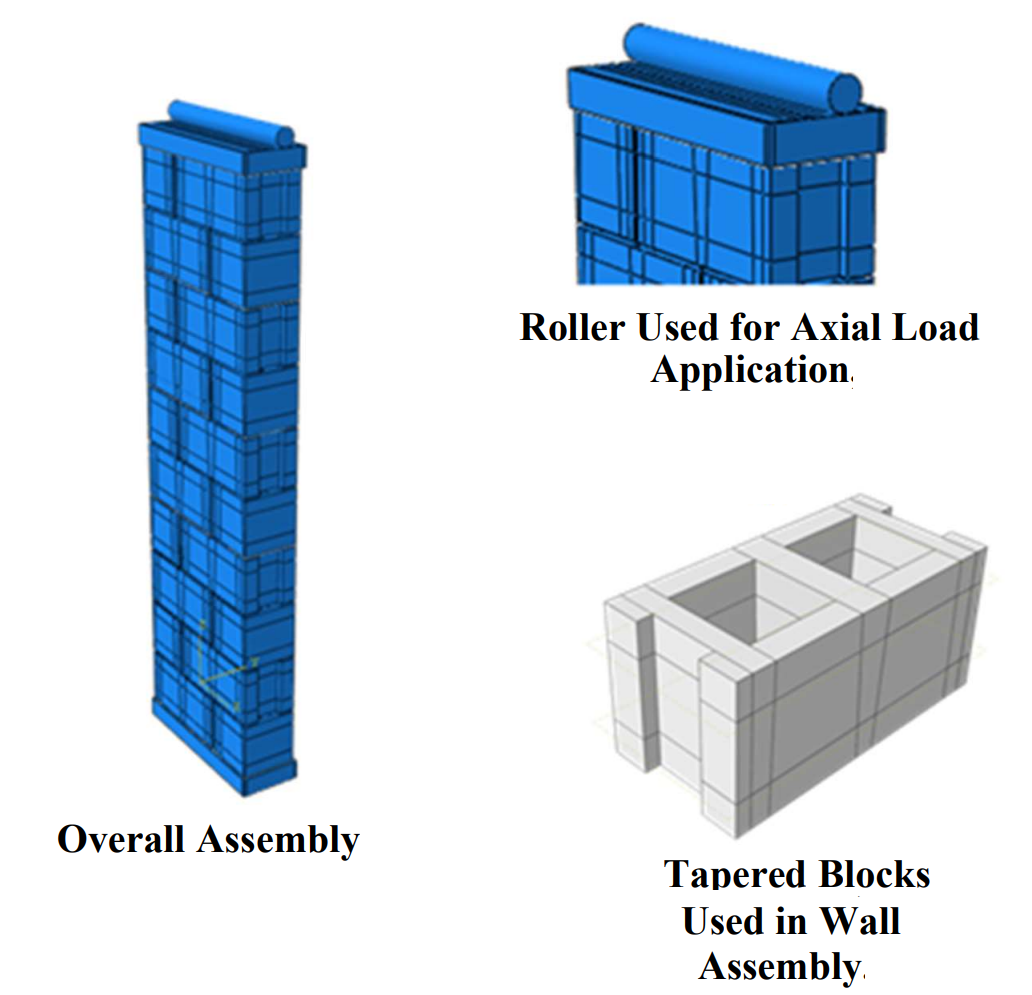
Recent NAMC Articles:
Haleem, B., Ahmed, A., Rathnayake, H., and Shrive, N.G. (2023, June) “An approach for numerically improving the parameters of the moment magnifier method.” In Proceedings of the Fourteenth North American Masonry Conference. Paper presented at the 14th North American Masonry Conference, Omaha, Nebraska (pp. 131-139). Longmont, CO: The Masonry Society
Iskander, G., Ahmed, A., and Shrive, N.G. (2023, June) “Experimentally testing eccentrically loaded full and half scale concrete masonry.” In Proceedings of the Fourteenth North American Masonry Conference. Paper presented at the 14th North American Masonry Conference, Omaha, Nebraska (pp. 238-247). Longmont, CO: The Masonry Society
Select Journal Articles:
Isfeld, Andrea C., Anna Louisa Müller, Mark Hagel, and Nigel G. Shrive. “Analysis of safety of slender concrete masonry walls in relation to CSA S304-14.” Canadian Journal of Civil Engineering 46, no. 5 (2019): 424-438.
Isfeld, Andrea C., Anna L. Müller, Mark Hagel, and Nigel G. Shrive. “Testing and finite element modelling of concrete block masonry walls under axial and out-of-plane loading.” International Journal of Masonry Research and Innovation 6, no. 1 (2021): 60-80.
Bogoslavov, M., Shrive, N.G. “On the Effective Stiffness of Slender Concrete Masonry Walls in the Canadian Masonry Standard” Masonry International, (winner, best student project, International Masonry Society, 2022), in press, 2023
Select Theses and HQP: :
George Iskander: https://prism.ucalgary.ca/items/4fb474a8-e4f2-44d0-b66a-3bfa8ad4929f
Mihailo Bogoslavov: https://prism.ucalgary.ca/items/1dd128b1-9534-4369-be82-e40c8576dfba
Testing, Modelling, and Reliability Analysis of Masonry
Project Summary:
Despite the high level of vulnerability of unreinforced masonry structures under applied loads and the importance of their reliability evaluation, there is no formal methodology to assess the reliability of historic masonry structures. Therefore, a step-by-step methodology for assessing the reliability level of historic masonry structures is being developed.
To develop an appropriate determinate methodology, estimations of probabilistic models of structural resistance and load effects are required to formulate a limit state function. The stochastic characteristics of construction materials play key roles in the determination of probabilistic models of structural resistance. Codes of practice recommend values as well as the best fit distributions for different material characteristics.
As codes are necessarily conservative and are also generally aimed at design or assessment with modern masonry materials, the use of code values for historical structures may lead to inaccurate reliability assessment. Destructive testing of a historic masonry structure or its components in order to get more realistic information regarding the material properties is not recommended as such tests may lead to irreparable damage to these valuable structures.
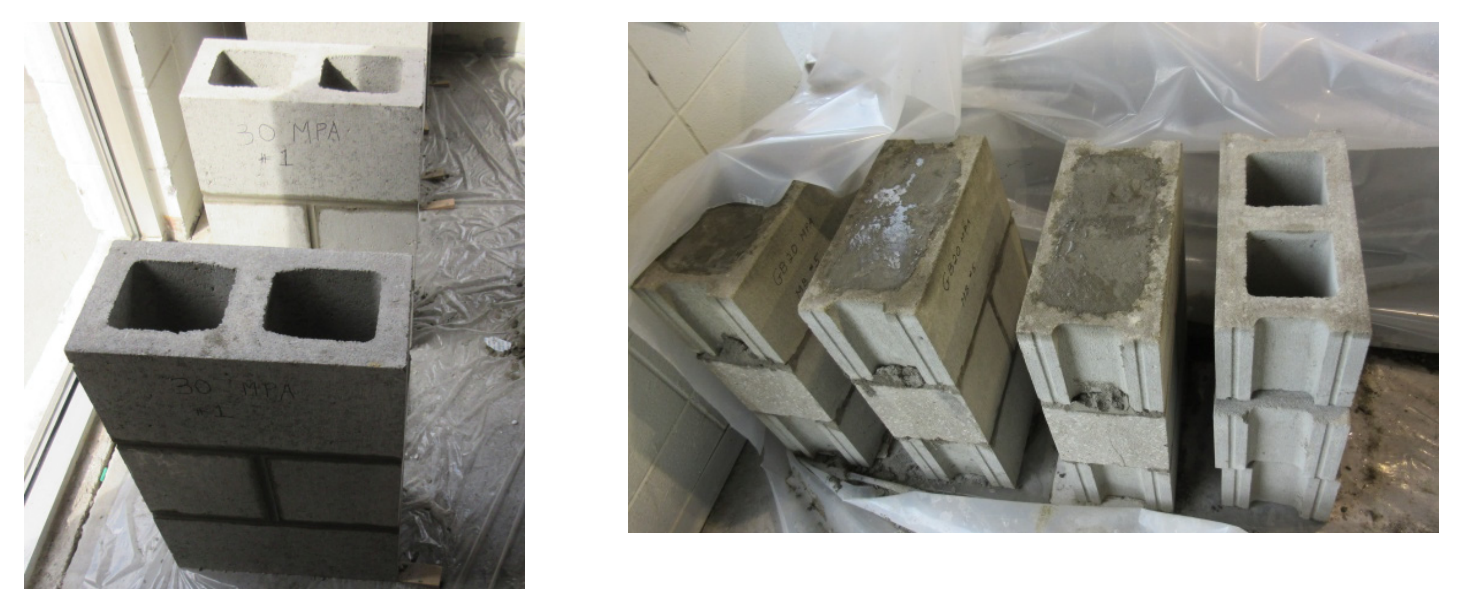
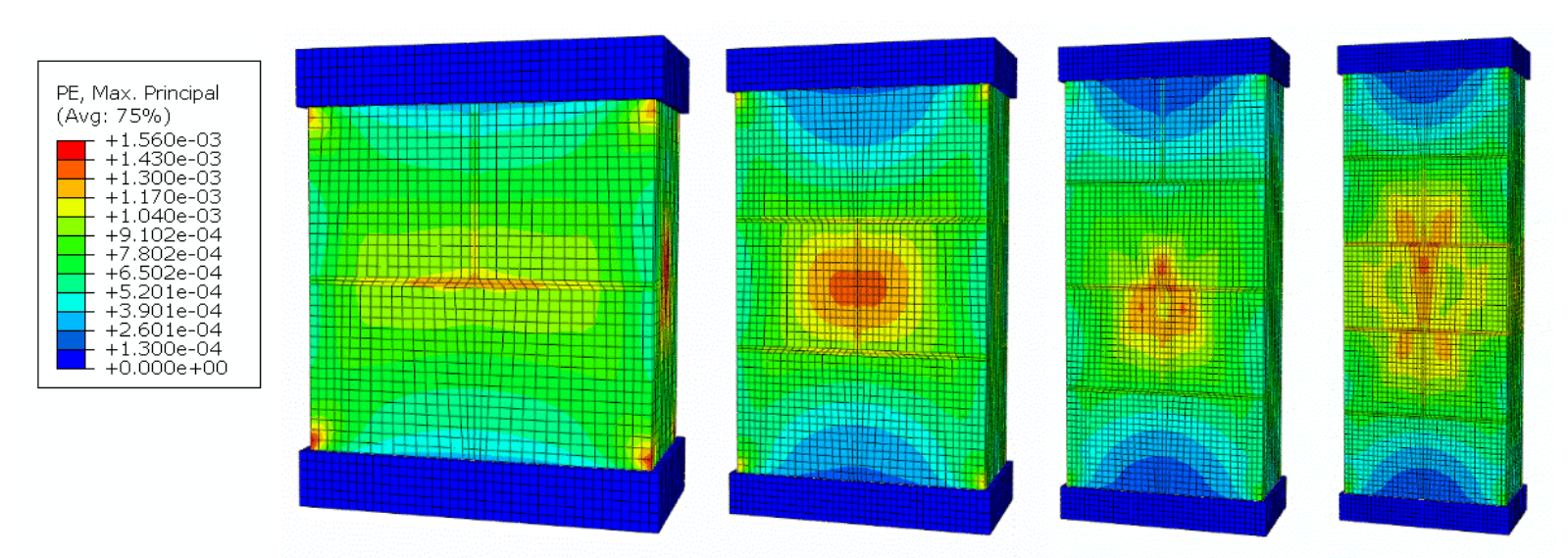
Recent CMS Articles:
Recent NAMC Articles:
Pasquantonio R., Parsekian G., Fonseca F., and Shrive N. (2019, June). “Interface Parameters Between Masonry Concrete Blocks and Mortar for Modeling of Masonry Structures.” In P.B. Dillon & F.S. Fonseca (Eds.), Proceedings of the Thirteenth North American Masonry Conference. Paper presented at the 13th North American Masonry Conference, Salt Lake City, Utah (pp. 1055–1064). Longmont, CO: The Masonry Society
Isfeld A., Hagel M., and Shrive N. (2019, June). “Finite Element Analysis of Hollow Concrete Block Masonry Walls.” In P.B. Dillon & F.S. Fonseca (Eds.), Proceedings of the Thirteenth North American Masonry Conference. Paper presented at the 13th North American Masonry Conference, Salt Lake City, Utah (pp. 1110–1122). Longmont, CO: The Masonry Society.
Select Theses and HQP:
Setare Seyedain Boroujeni: https://prism.ucalgary.ca/handle/11023/3855
Masonry Arch Retaining Walls
Project Summary:
Masonry arches have a long history of use in construction and are a very efficient method for resisting applied loads by taking advantage of the high compressive strength of the material and inducing minimal tensile stresses. Contemporary structural design approaches favor the use of beam and flexural wall elements to resist distributed loads through a flexural resistance mechanism in which tensile stresses are resisted by reinforcing bars.
Although simple to design and construct this type of structural masonry element is somewhat inefficient in its use of materials since the masonry material in tension is generally deemed not to contribute to the resistance. This research project aims to demonstrate how an unreinforced masonry arch system may be used to efficiently resist horizontal soil pressures for low-rise retaining wall structures.
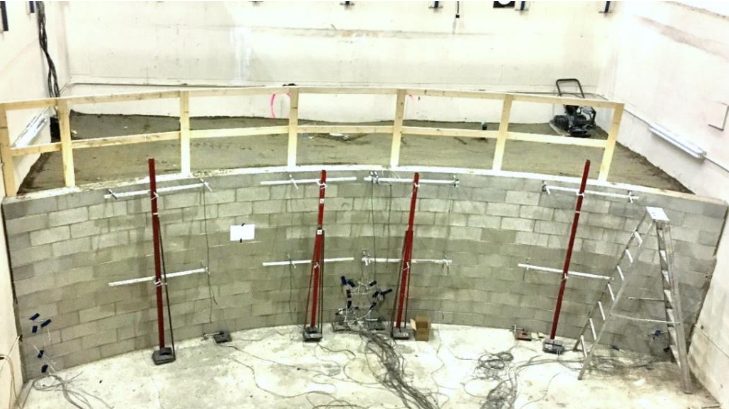
Recent NAMC Articles:
Rathnayake, H., Ahmed, A., Iskander, G., Shrive, N.G., (2023, June). “Influence of Boundary Conditions on the Performance of Block Arch Masonry Retaining Walls.” In Proceedings of the Fourteenth North American Masonry Conference. Paper presented at the 14th North American Masonry Conference, Omaha, Nebraska (pp. 888-898). Longmont, CO: The Masonry Society
Select Journal Articles:
Kurukulasuriya, M., Shrive N.G., “Flat Arch Masonry Retaining wall” Masonry International, 33 (3), 64-74, 2021. (winner, 2020 best graduate project award, International Masonry Society)
Kurukulasuriya, M., Shrive N.G., “Innovative Masonry Arch Design for Low-rise Retaining Walls” Invited, translated and published in Portuguese, Revista Estrutura (Brazilian structures association magazine), 12, 6, 28-34, March 2023.
Select Theses and HQP: :
Maithree Chiranthya Kurukulasuriya: https://prism.ucalgary.ca/items/cc112d40-c6b3-497e-9623-8674887b6ff8
Partially Grouted Masonry Shear Walls
Project Summary:
Reinforced masonry shear walls are commonly used to form the lateral load resisting system of reinforced masonry buildings. This type of construction is widely used across Canada and developments in design approaches and standards have allowed increasingly efficient use of materials. However, whereas fully grouted reinforced masonry exhibits a well-established shear behaviour akin to that of reinforced concrete, additional complexity is introduced for partially-grouted reinforced masonry shear walls.
This research project examines the behaviour and various possible modes of failure of partially-grouted reinforced masonry shear walls in view of developing reliable analysis and design tools.
Recent NAMC Articles:
Zhu, J., Ahmed, A., Iskander, G., Shrive, N.G., (2023, June). “Size Effect on Concrete Masonry Shear Strength Under Various Grouting and Precompression Conditions.” In Proceedings of the Fourteenth North American Masonry Conference. Paper presented at the 14th North American Masonry Conference, Omaha, Nebraska (pp. 78-88). Longmont, CO: The Masonry Society
Pan, H., Isfeld, A.C., Shrive N.G. (2019, June). “The failure of partially grouted masonry walls subject to in-plane shear is affected by the stiffness of the grouted “frame”.” In P.B. Dillon & F.S. Fonseca (Eds.), Proceedings of the Thirteenth North American Masonry Conference. Paper presented at the 13th North American Masonry Conference, Salt Lake City, Utah (pp. 1227–1239). Longmont, CO: The Masonry Society.
Select Journal Articles:
Zhu, J., Shrive, N.G., “Partially Grouted Concrete Masonry Shear Walls Subject to In-Plane Shear Load: A Critical Review” IBRACON Materials and Structures Journal, invited, 16, 3, e16301, 2023.
Rizaee, S., Lissel, S.L., Shrive N.G., “The Effect of the Amount, Distribution and End Anchorage Conditions of Bond Beam Reinforcement on the Behaviour of Concrete Masonry Shear Walls” Canadian Journal of Civil Engineering, 48 (12), 1583-1600, 2021.
Shrive N.G., Dhanasekar, M., Masia, M.J., Page, A.W., “The Response of Wide-Spaced Partially Grouted Concrete Masonry to In-Plane Shear – State of the Art and Research Needs” International Journal of Masonry Research and Innovation, 3 (4), 369-381, 2018
Select Theses and HQP:
Huina Pan: https://prism.ucalgary.ca/handle/1880/106830



